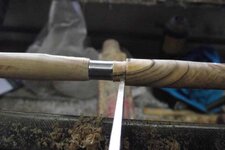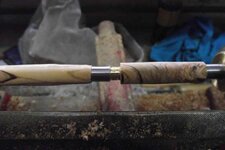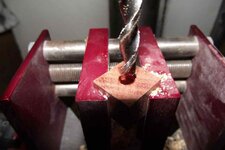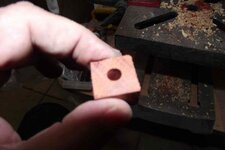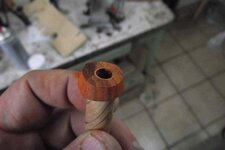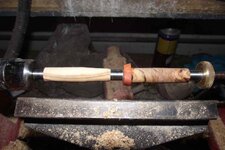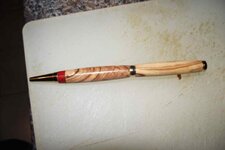pauly99
Member
I just turned my 3rd pair of blanks (ever) and made what I thought was a nice shape (for lack of knowing the correct term) with the soft poplar. Well unfortunately one of the pair of planks has maybe 3 slight chips of maybe 1/64th or so of an inch at the end. I'm assuming it happened because I may have tightened the nut a little bit too much and the pressure caused the problem. I don't believe it happened with the skew.
So my question. Is there any way that I could take some of the shavings and somehow fix the damaged end of the blank? If so, how would that be done.. ie what type of glue/epoxy, and then would I sand it out?
At maybe 1/64th of an inch or so, if this is for my own use and I didn't attempt to fix the blank, would I be able to see the brass if I put the pen together "as is"?
So my question. Is there any way that I could take some of the shavings and somehow fix the damaged end of the blank? If so, how would that be done.. ie what type of glue/epoxy, and then would I sand it out?
At maybe 1/64th of an inch or so, if this is for my own use and I didn't attempt to fix the blank, would I be able to see the brass if I put the pen together "as is"?

